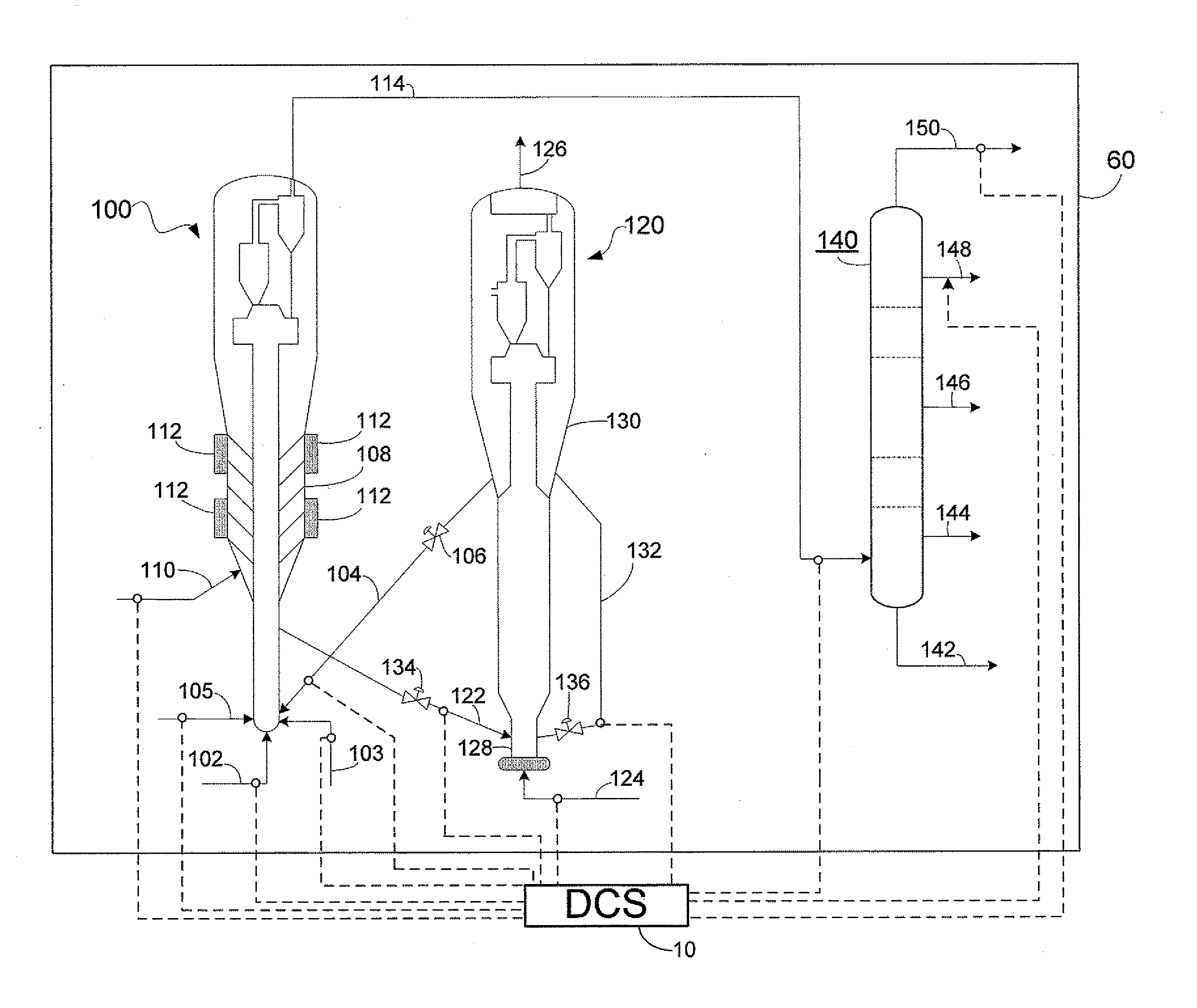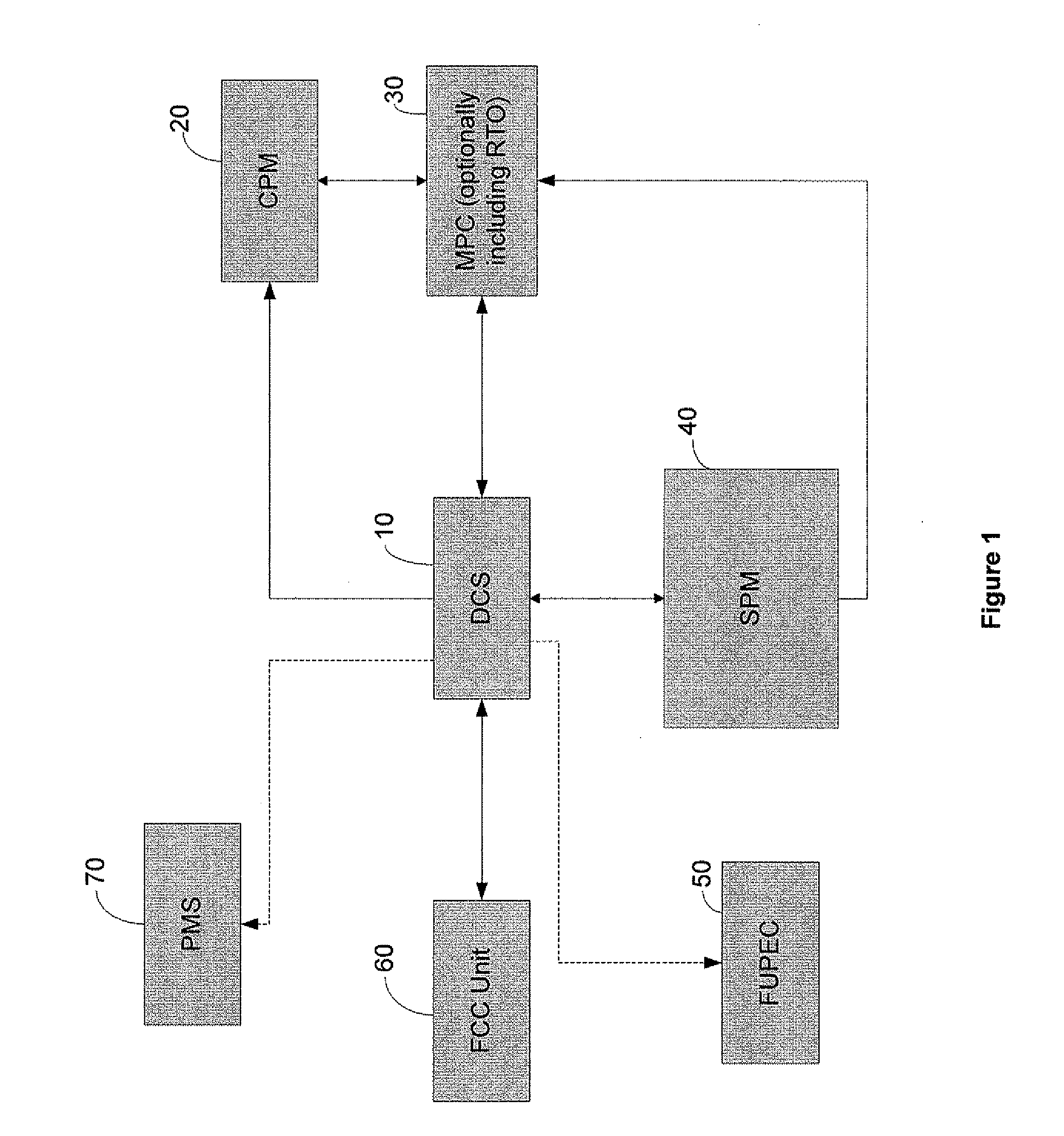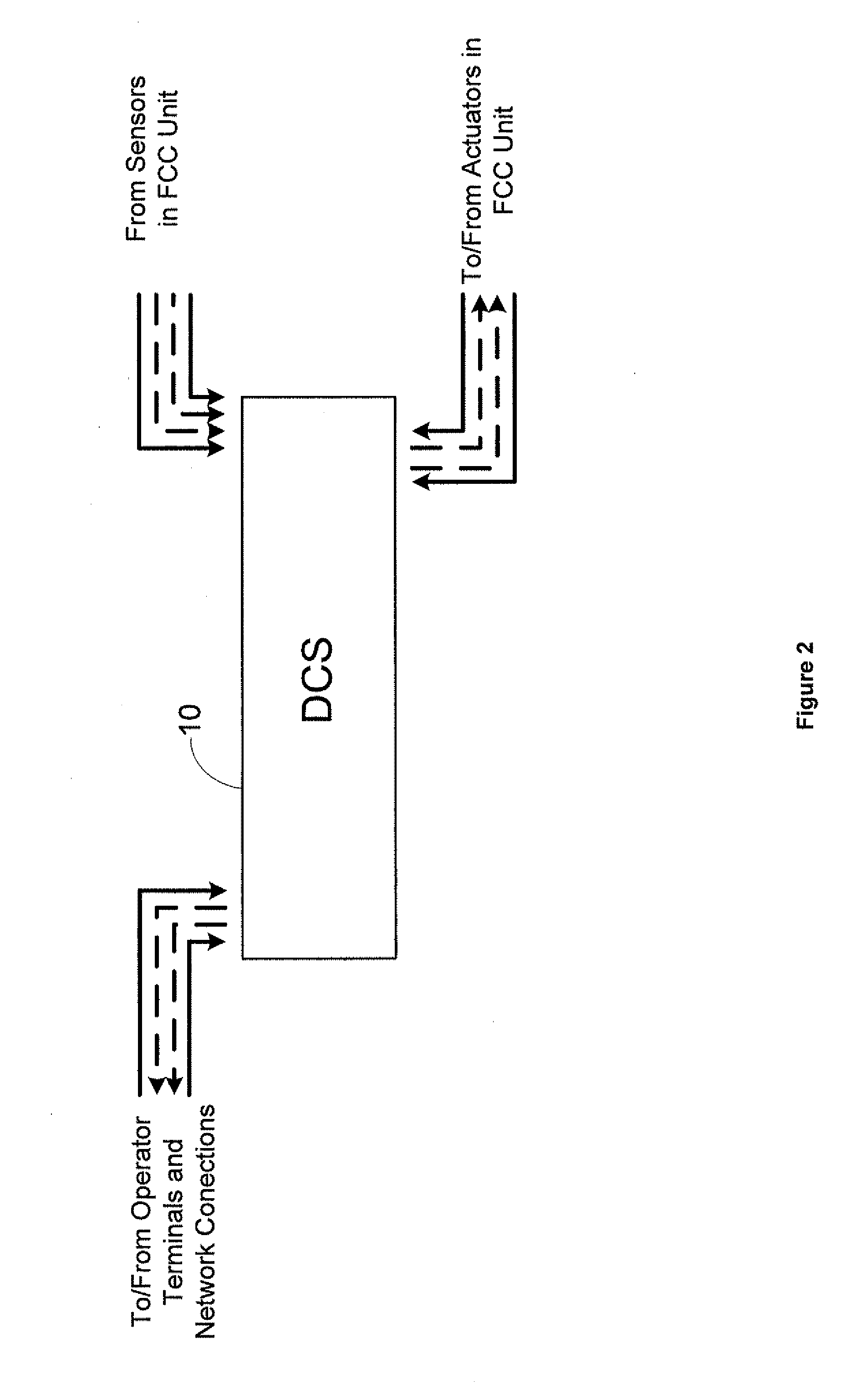Control of Fluid Catalytic Cracking Process for Minimizing Additive Usage in the Desulfurization of Petroleum Feedstocks
- Summary
- Abstract
- Description
- Claims
- Application Information
AI Technical Summary
Benefits of technology
Problems solved by technology
Method used
Image
Examples
example 1
[0117]In one exemplary embodiment, a vacuum gas oil sample was supplied to an FCC unit that included a reaction zone, a regeneration zone, and a stripper that includes a microwave or sonic energy producer, to produce high-yield gasoline with a high octane. The FCC unit was charged with a catalyst that included a base catalyst of about 20% by weight of an ultra stable Y-type zeolite and about 77% by weight of an amorphous aluminosilicate matrix. The reactor was operated such that the reaction zone was maintained at a temperature of between about 500° C. and 550° C. and a pressure of between about 8 and 30 psig. The catalyst / oil ratio was maintained between about 5 and 16 wt / wt. The exit temperature of the regenerator for the hot catalyst was between about 650° C. and 815° C.
[0118]The FCC unit produced a product stream that includes approximately 10% by weight liquefied petroleum gas, about 45-55% by weight FCC gasoline, about 13-18% by weight light cycle oil, and heavy fractions.
example 2
[0119]As shown in the table below, increasing the amount of FCC additive, relative to the FCC catalyst, results in decreased sulfur content of the resulting gasoline fraction. For example, a vacuum gas oil having a sulfur content of approximately 1.5% by weight was cracked in an FCC unit at a temperature of about 518° C. utilizing a commercially available base FCC catalyst and a commercially available FCC additive, to produce a desulfurized full range (i.e., 221° C. fraction). As shown, sulfur content decreases with increased FCC additive usage.
Percentage of FCCGasoline sulfur% reductionAdditive (by weight)content, ppmin gasoline sulfur0 (base catalyst)764N / A 5%65614.310%60421.015%55827.1
[0120]Although the present invention has been described in detail, it should be understood that various changes, substitutions, and alterations can be made hereupon without departing from the principle and scope of the invention. Accordingly, the scope of the present invention should be determined b...
PUM
 Login to View More
Login to View More Abstract
Description
Claims
Application Information
 Login to View More
Login to View More - R&D
- Intellectual Property
- Life Sciences
- Materials
- Tech Scout
- Unparalleled Data Quality
- Higher Quality Content
- 60% Fewer Hallucinations
Browse by: Latest US Patents, China's latest patents, Technical Efficacy Thesaurus, Application Domain, Technology Topic, Popular Technical Reports.
© 2025 PatSnap. All rights reserved.Legal|Privacy policy|Modern Slavery Act Transparency Statement|Sitemap|About US| Contact US: help@patsnap.com



